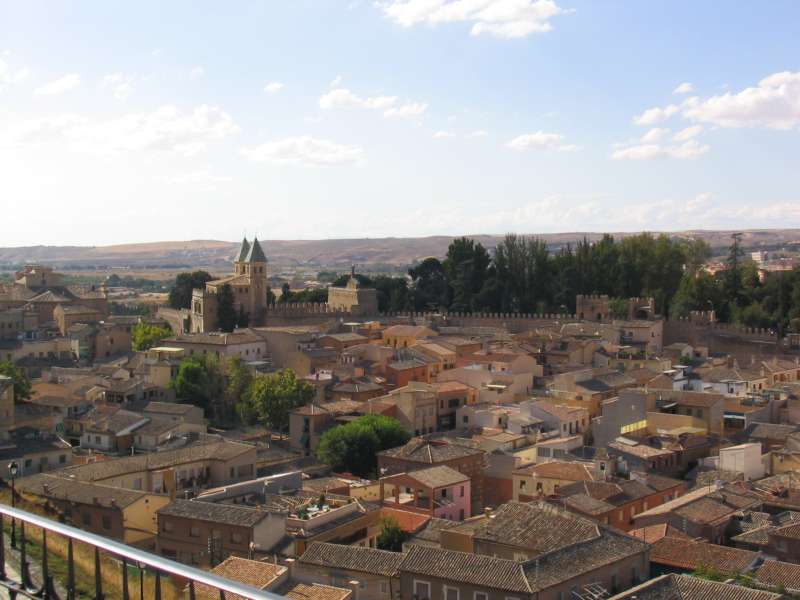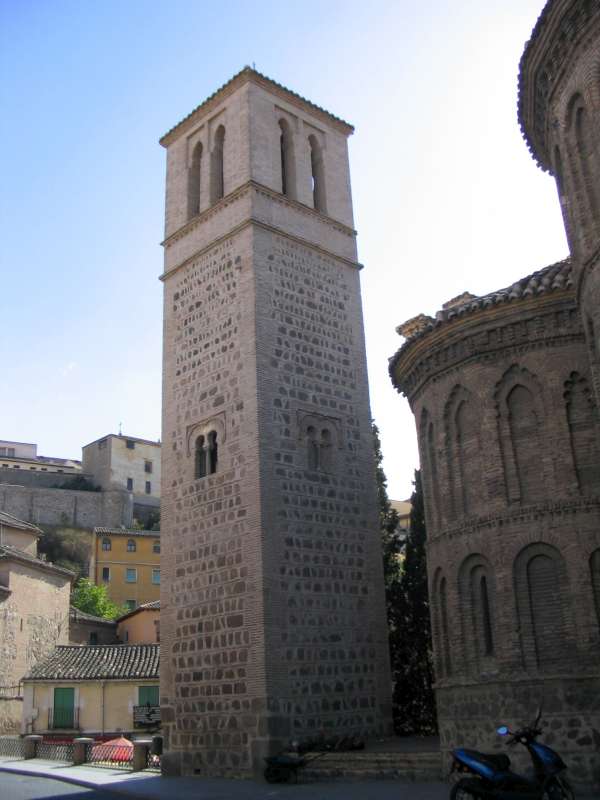
World Monument Photography
April 24, 2024
One of the best preserved Medieval cities in Europe is Toledo. It is so well preserved that the entire old city has been declared a UN Heritage site. The city`s glory has been tied to its prominence in the arts and sciences as well as its tough military prowess. This article reviews Toledo`s glorious past.

Toledo`s history dates back to the Roman period when the city was conquered in 193 B.C., when it was already an important Celtiberian city. By the fifth century, Toledo fell to the Visigoths. The Visigoths entered the Iberian peninsula as Arians – a condemned version of Christianity that did not accept the full divinity of Christ.
The Muslims first entered Toledo in 712 A.D. and stayed there for 373 years. In less than four centuries, the Muslims transformed this city into one the most advanced cities in science, culture, and art. During the time of the Caliphate of Cordoba, which unified much of the Iberian peninsula, Toledo became an important learning center boasting thousands of books in hundred of libraries.
At the time of the break up of the Caliphate of Cordoba, Toledo came under a Berber ruler, Al-Zafir (1018-1043) of the Banu Dhi Nun. Al-Zafir received great praise from several writers in his defense of Islam and for his great support for scholarship. He often surrounded himself with scholars of the time such as Ibn Labbun, Ibn al-Farag, and Ibn Mahqur who were all men of exact sciences and poetry.
It was under his successor, al-Mamun (1043-1073), that the Taif Kingdom of Toledo reached its height. During his reign, al-Mamun magnificent buildings were erected, such as the Holy Council (Majlis al-Mukaram), the Garden of Noria (Bustan al-Na`ura). He was also responsible to bringing much land around Toledo fall under his dominion. He took over Valencia and for a short time also held Cordoba. It seemed that he would be able to unify all major Taifs under his rule. He also honored the sciences. The best example of this is his appointment of Ibn Al-Wafid, a famous doctor, to the position of vizier (government minister).

The glory of Toledo in the 11th century was the development of exact sciences. Mathematicians and astronomers such as al-Waqqadi, al-Tugibi, ibn al-Attar, and ibn Hamis all were a product of 11th century Toledo.
Al-Zarqali (1029-1087) was a famous for producing the Toledan tables, which gave accurate length of the Mediterranean Sea, and his tables were also adapted to the meridians of London, Paris, and Pisa. Al-Zarqali was also a renowned instrument maker. Never having received formal education, he worked for a long time under other scientist building wide variety of metallic gadgets for them. Having noticed his natural abilities as an engineer, he was encouraged to learn the exact sciences. In 1062, he constructed water clocks of Toledo. The water locks consisted of two basins, which filled with water or emptied according to the increasing or waning of the moon. This was used to tell the day of the month. The clocks were in use until 1133 when Ibn Zahara was given permission by Alfonso VII to see how it worked. Unfortunately, he failed to reassemble the clock towers after dismantling them.
Another important scientist, whose works were translated into Latin in Toledo, was al-Khawarizmi. When translated into Latin, his work was known in Latin at “Algorithm.” He is better known as the father of modern algebra (algebra comes from the Arabic word “Al-Jabr” – meaning logic deduction). The symbols of the number system he used in his books is today known as Arabic numerals is now adopted in all Western nations. The concept of zero was also transmitted from his text books to the West. Al-Khawarizmi`s work also introduced Muslim trigonometry to the West, including the use of sine and tangent functions. He also introduced the concept of solving quadratic equations using symbols rather than geometrically, as was done in Ancient Greece.
There are several examples of great scientists, engineers, and architects that innovated new designs and principles during the short reign of the Taif Kingdom of Toledo, which are too many to mention here with great detail. What is interesting, several of what was believed to be European advances during the scientific golden age in Europe, was nothing more than translations of Arabic sciences discovered centuries later. As an example, Harvey was attributed to discovering the mechanism of blood circulation in the humans and animals in 1628 when he published his famous book “An Anatomical Study of the Motion of the Heart and the Blood in Animals”; however, early in the 20th century, it was discovered that his book was a word-for-word translation of Ibn Sina`s (Avicenna`s) that was published in the 11th century! Under the Berber rule in Toledo, the city truly flourished to its greatest potential at the time.
This great scientific advancement, however, was overshadowed with political instability in the region. At the time that the Andalucians were split into Taif kingdoms, their northern neighbors were also split and engaged into bitter fighting. In 1063, Fernando I divides his land between Sancho II, Leon, and Alfonso VI. Soon after his Fernando I`s death, his sons raised war on each other in order to try to control the other`s land. Sancho II was a shrewd ruler was quick to recognize Alfonso VI as a threat and convinced Leon to join him to defeat Alfonso VI. In 1071, Alfonso VI loses and seeks refuge in Toledo. As son for Ferdinand I, who protect the city, Al-Mamun grants Alfonso VI asylum in Toledo where he remains for years. It is widely believed that al-Mamun was poisoned by one of Alfonso VI`s spies in al-Mamun`s castle, which Alfonso gained over the years of his stay in al-Mamun`s castle.
Alfonso VI, tried to recover his territory by removing Sancho II from power. He engineered a rebellion in Zamor by the help of princess Urraca (his sister), which Sancho II attempts to quell and gets killed in the process. With this act, Alfonso VI became the new King of Castile.
Alfonso VI now sets his eyes Toledo, which is now ruled by a weak ruler, al-Qadir – grandson of al-Mamun. Unable to keep his kingdom under control, al-Qadir asked Alfonso VI for help and remained under his protection for ten years. Alfonso VI demanded increasing amounts of tribute, which al-Qadir attempted to extract from his dominion by overtaxing people and severely punishing anyone who tried to evade taxes. This inevitably weakened al-Qadir`s position in his government and in 1084, decided that he can`t hold on to Toledo anymore. He offered Alfonso VI direct control over Toledo in exchange for help in getting out of the city and exile in Valencia.
In 1085, King Alfonso VI gladly accepted al-Qadir`s invitation and invaded Toledo and made it the Castilian capital. One of King Alfonso`s first acts was to burn down many of Toledo`s libraries. Later in the 12th century, Toledo became the center of translation of books from Arabic to Latin, hence beginning the transmittal of knowledge from the Muslims to the rest of Europe. The foundations of the European Renaissance were being laid down in these translations.
Over time, Toledo lost its significance and disappeared from the history pages. Today, Toledo is a small city overshadowed by its neighbor Madrid. The outline of the city remains intact with most of its wall still holding the old city. The legacy of the Christian conquest of Toledo is that it was the beginning of their scientific awakening and for the Muslims is that is was the beginning of their expulsion from the Iberian peninsula and the beginning of their scientific and cultural decline.